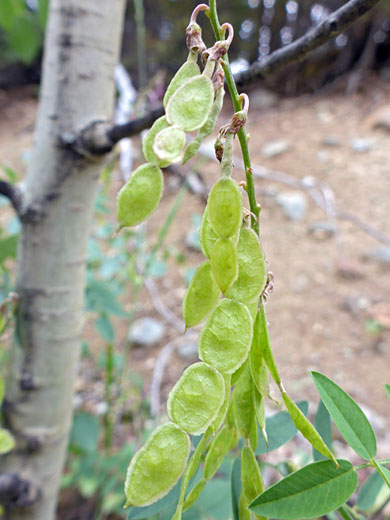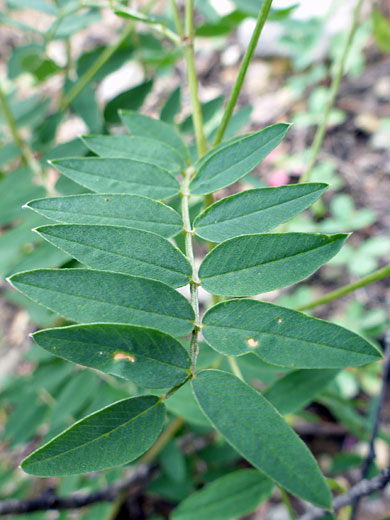Common name:
Western sweetvetch
Family:
Scientific name:
Hedysarum occidentale
Main flower color:
Range:
The north and central Rocky Mountains, plus northeast Arizona and Washington
Height:
Up to 3 feet
Habitat:
Meadows and open woodland, between 5,000 and 10,500 feet
Leaves:
Alternate, divided into between 9 and 21 ovate leaflets, these around one inch long
Season:
June to August
Hedysarum occidentale is a relatively large species, usually between 2 and 3 feet tall, inhabiting mountainous areas at medium to high elevations. Stems and leaves have a sparse covering of very short, bristly hairs. Leaves are odd-pinnate, with up to ten pairs of lateral leaflets. Leaflets terminate in a tiny spike, and they have a grooved midvein and regular, parallel side veins.
The inflorescence is an elongated cluster, several inches in length. Flowers are pendent; they have a short, reddish, strigose calyx with five triangular lobes, unequal in size, and five pink to purple petals (occasionally all-white). The calyx lobes are shorter than the tube. The banner and keel petals are the largest, and the latter is strongly bent underneath. The fruit is flattened green pod (a loment) formed of between one and four ovate segments, covered by an irregular pattern of veins, and lined by a thin, lighter-colored margin. The surfaces of the pod are slightly hairy.
The inflorescence is an elongated cluster, several inches in length. Flowers are pendent; they have a short, reddish, strigose calyx with five triangular lobes, unequal in size, and five pink to purple petals (occasionally all-white). The calyx lobes are shorter than the tube. The banner and keel petals are the largest, and the latter is strongly bent underneath. The fruit is flattened green pod (a loment) formed of between one and four ovate segments, covered by an irregular pattern of veins, and lined by a thin, lighter-colored margin. The surfaces of the pod are slightly hairy.
All Contents © Copyright The American Southwest | Comments and Questions | Contribute | Site Map



